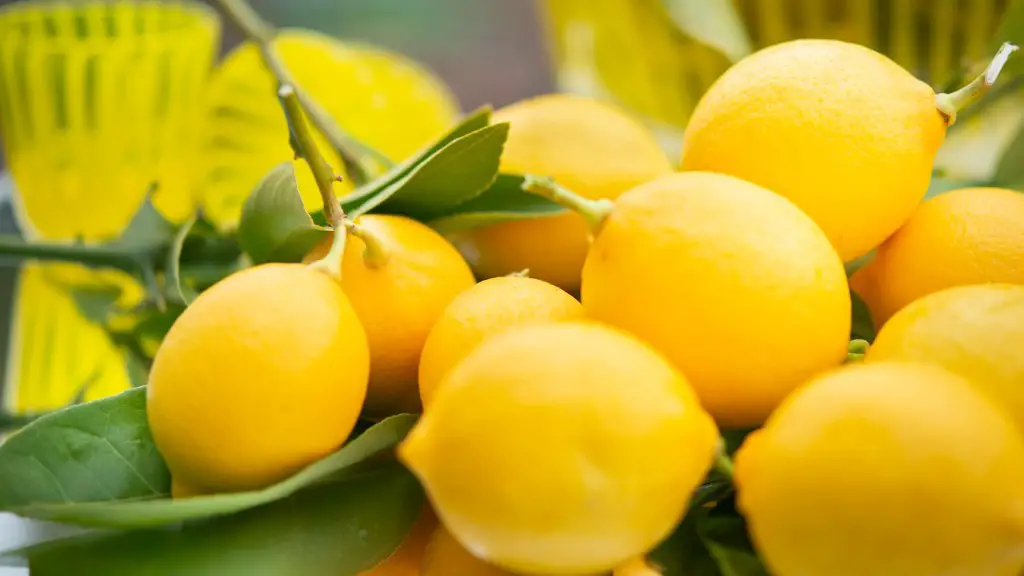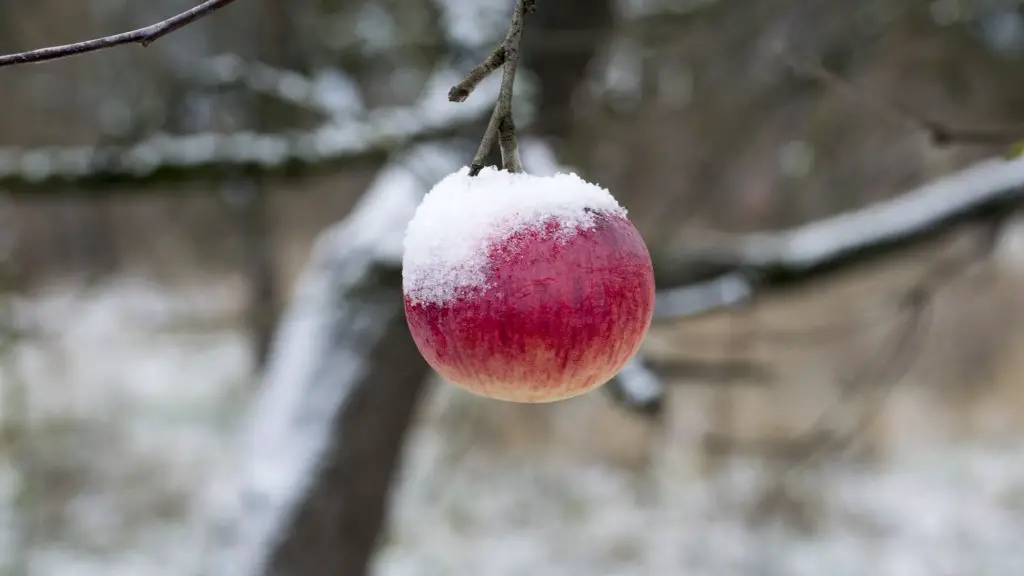Lemon trees are known for their hardiness and regularly produce lemons year after year. However, there are several pests and diseases that can cause damage to lemon tree leaves. The most common suspects are caterpillars, scale insects, sooty mould, fungal diseases and sunburn. When these pests or diseases occur, they can cause severe damage to the leaves of the lemon tree, making them turn yellow and drop off.
Caterpillars are a certain group of moths and butterflies that feed on the leaves and flowers of plants. They lay eggs near the base of the lemon tree, once the eggs hatch, the caterpillars start feeding off the leaves and flowers. This can cause the leaves to turn yellow, brown and die off. Caterpillars can be managed by using the biological control Bacillus thuringiensis (BT).
Scale insects are small, immobile insects that form a protective cover over their bodies, commonly found in tropical and subtropical plants. They reproduce quickly and can cause serious damage to lemon trees by sucking the sap and nutrients from the leaves and stems. This can also cause the leaves to become yellow and die off. The best way to treat scale insects is to manually remove them from the tree, or to use insecticides.
Sooty mould is a fungal infection that can cause a yellow-black mould on the leaves of the lemon tree. Sooty mould spores are spread by sap-sucking insects such as scale insects and aphids and can cause the leaves to become yellow and die off. The best way to treat sooty mould is to remove any sap-sucking insects and to try to maintain good air circulation around the tree.
Fungal diseases are caused by a variety of fungal pathogens that can affect the leaves of the lemon tree. These pathogens can cause the leaves to become yellow and die off. Common fungal diseases of lemon trees include powdery mildew and rust. The best way to treat fungal diseases is to remove any infected leaves and to use a fungicide.
Sunburn is a type of damage that can be caused to lemon trees in areas where the sun is too strong. Sunburn can cause yellowing of the leaves and it can also cause the leaves to become brittle and to die off. The best way to avoid sunburn is to provide shade for the lemon tree and to water it regularly.
In order to prevent damage to lemon tree leaves, it is important to regularly inspect them for signs of pests or diseases. If any pests or diseases are found, it is best to take the necessary steps to address the problem as early as possible. Regular pruning and good air circulation can also help to protect the tree from damage.
Biological Control
Biological control is a method used to combat pests and diseases of plants. This involves introducing beneficial organisms into the environment which can target specific pests and diseases without harming the plants or surrounding wildlife. This can be done through the use of beneficial predators such as ladybugs and wasps which naturally feed on the pests. It can also be done through the use of bacteria such as Bacillus thuringiensis (BT) which is specifically targeted towards caterpillars.
Insecticides
Insecticides are chemical compounds which are used to control pests of plants. They are typically used to kill or repel the pests that are causing damage to the plants. These chemicals can be harmful to the environment, so it is important to use the correct type and the correct amount when using insecticides. They should also only be used when necessary.
Fungicides
Fungicides are chemicals which are used to control fungal diseases of plants. They are typically used to kill or prevent the spread of the pathogens that are causing the disease. Fungicides can be effective in treating fungal diseases, but they can also be harmful to the environment. It is important to use the correct type and the correct amount when using fungicides.
Pruning
Pruning is a technique used to shape and maintain plants. When pruning a lemon tree, it is important to remove any dead or damaged leaves or branches. This will encourage healthy growth and also help to keep the tree in shape. Pruning can be done by cutting off the leaves or branches at the desired length, or by using a pruning saw to remove them.
Watering
Good water management is essential in order to keep the lemon tree healthy. The tree should be watered regularly, but not too often. It is also important to keep the soil moist but not waterlogged. Too much water can cause the roots to rot, while not enough water can cause the leaves to become yellow and drop off. It is best to water the tree in the morning to allow the leaves to dry out quickly.

